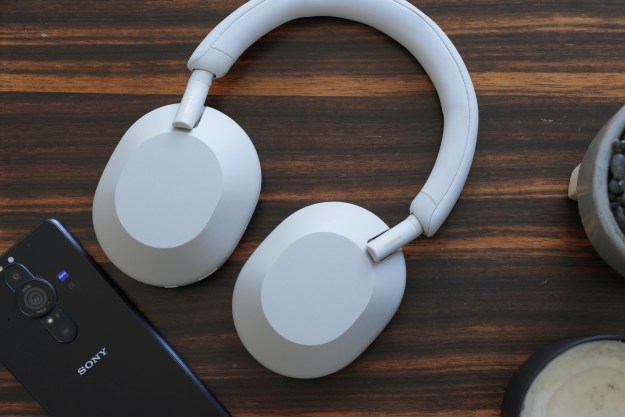Aftershokz has made some waves as one of a handful of companies daring to make “bone conduction” headphones. As the tech’s ominous name suggests, bone conduction headphones are different from your standard cans because they rest just in front of your outer ear and transmit vibrations through a bone in your head … literally. As such they don’t block out the surrounding sounds, leaving you free to bike, run, or otherwise cruise around without missing important aural cues — like a bus bearing down on you at high speed. The company’s latest model, the Trekz Titanium, is making its official crowdfunding debut today on Indiegogo, and Aftershokz says they take the bone-buzzing tech to a whole new level.
While the previously-released Aftershokz BlueEZ impressed us with their ability to let us jam out while burning up the bike lane without the fear of automotive annihilation, it’s true that the sound didn’t deliver the kind of intimate experience you’d get from a traditional headphone. But Aftershockz claims the Trekz Titanium will improve the aural experience while preserving the freedom bone conduction headphones provide.
To that end, the Trekz Titanium boast a new twist on the original design via a technology dubbed PremiumPitch+. Aftershokz doesn’t give up much on how PremiumPitch+ works, they simply describe the tech as a “patented solution” to the common complaints of weak bass response and sound leakage that often plague bone conductors. In addition, the new ‘phones boast another buzzword-technology called LeakSlayer, designed to further help keep your tunes from bugging the world around you.
As for the build, naturally Trekz Titanium’s halo band sports … titanium at the core, designed to offer strength and flexibility as you move through your sporting activities. In addition, the plastic exterior is sweat- and dust-resistant so you can get your workout on without worrying about shorting out (or funking up) your cans.
And in case you hadn’t noticed, these babies pack Bluetooth for wireless connection to your device. They also offer amenities like voice-activated playback controls through a personal assistant called “Audrey Says,” as well as noise-cancelling mics for fielding phone calls on the go. Battery run-time for the headphones is estimated at around six hours, which definitely isn’t fantastic, but there is a 15-minute boost-charge feature which is claimed to provide enough playback time to “get you through a long workout or a marathon.”
If you’re still not convinced about the Trekz Titanium will sound good, know this isn’t all that onerous of an investment: As of the time of publication, the cans are available at an Earlybird special on Indiegogo for just $80, moving up from there to the eventual $130 MSRP once the crowdfunding campaign concludes. And since Aftershokz has been at this for awhile, you can be fairly certain you’re not throwing down cash for some concept cans that will never make it off the workbench.
If you love listening to music on the go, but aren’t so crazy about that hope-I-don’t-get-hit-by-a-bus feeling, the new Trekz Titanium might just be worth checking out. The headphones are available for pledges at their Indiegogo page now.
Editors' Recommendations
- Marshall’s latest headphones get 100 hours of battery life and wireless charging
- Astell&Kern’s new headphone DAC is PlayStation-ready
- Sennheiser’s new budget-friendly headphones get a very high-end feature
- Get ready for a new generation of wireless headphones: Bluetooth LE Audio is now a done deal
- V-Moda’s pricey new S-80 puts a Bluetooth speaker into your headphones


